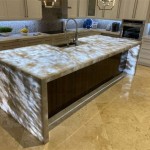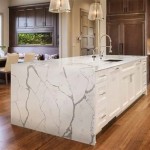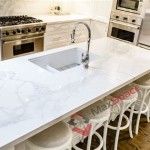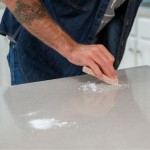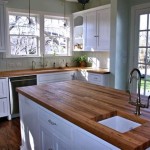Brackets For Butcher Block Countertop: A Comprehensive Guide
Butcher block countertops offer a warm, natural aesthetic to kitchens, islands, and even workspaces. Their durability and versatility make them a popular choice for both residential and commercial applications. However, the substantial weight and potential for expansion/contraction due to humidity changes require proper support. Brackets play a crucial role in ensuring the stability and longevity of a butcher block countertop. This article provides a detailed explanation of different types of brackets, installation considerations, and factors to consider when selecting the appropriate brackets for a specific butcher block application.
Understanding the Importance of Proper Support
Butcher block countertops, constructed from solid wood pieces glued together, are inherently heavy. As a natural material, wood is susceptible to changes in moisture content, which can cause the countertop to expand or contract. Improper support can lead to sagging, warping, or even cracking of the butcher block. Brackets provide essential support by distributing the weight of the countertop and mitigating the effects of expansion and contraction. They also prevent the countertop from shifting or moving, ensuring a stable and safe work surface. For islands and peninsulas, brackets become even more critical as these often lack continuous base cabinet support.
The weight of the butcher block is a primary factor determining the required support. The thickness and dimensions of the countertop directly influence its weight per square foot. A thicker and larger butcher block will naturally require more substantial brackets and closer spacing. Additionally, the intended use of the countertop influences the support requirements. A countertop used primarily for light food preparation will require less robust support than one subjected to heavy chopping, cutting, and food processing activities. Consider also the potential for placing heavy appliances, such as stand mixers or blenders, on the countertop. Finally, the substrate, or the surface to which the brackets are attached, dictates the type and size of fastener capable of withstanding the load. A solid wood cabinet frame offers significantly more holding power than drywall or thin plywood.
Ignoring proper support can lead to a host of problems. The countertop may begin to sag in the middle, creating an uneven work surface. Warping can occur due to uneven moisture absorption and lack of adequate support to counteract the wood's natural tendency to move. Cracks can develop in areas of high stress, compromising the structural integrity of the countertop. In severe cases, the countertop may even detach from its support structure, posing a safety hazard. Therefore, investing in appropriate brackets and ensuring proper installation is crucial for the longevity and stability of a butcher block countertop.
Types of Brackets for Butcher Block Countertops
A wide variety of brackets are available to support butcher block countertops, each designed for specific applications and load-bearing requirements. Understanding the different types of brackets and their characteristics is essential for selecting the most appropriate option for a given project.
Corbels: Corbels are decorative, angled brackets that provide both support and aesthetic appeal. They are typically made of wood or metal and come in a wide range of styles, from traditional to modern. Corbels are often used to support overhanging countertops or islands, adding a touch of elegance to the kitchen design. However, their load-bearing capacity is generally less than that of other types of brackets, and they may require additional support for heavier countertops. When selecting corbels, ensure they are made of a durable material and are adequately sized to support the weight of the butcher block. The attachment method is also crucial; ensure the corbel can be securely fastened to both the countertop and the supporting structure.
L-Brackets: L-brackets, also known as angle brackets, are simple and versatile brackets that provide strong support. They are typically made of steel or stainless steel and are available in various sizes and thicknesses. L-brackets are commonly used to support countertops along a wall or to reinforce existing cabinet structures. Their straightforward design makes them easy to install. The size and thickness of the L-bracket should be chosen based on the weight of the countertop and the distance between supports. Choose L-brackets with pre-drilled holes for easy installation, and ensure they are securely fastened to both the countertop and the supporting structure.
Hidden Brackets: These brackets offer a clean, minimalist aesthetic by concealing the support structure. Hidden brackets are typically made of steel and are designed to be recessed into the cabinet or wall. They provide strong support without being visible, creating a seamless look. Hidden brackets are ideal for applications where aesthetics are a primary concern. Installation requires precise measurements and careful execution to ensure the brackets are properly aligned and securely fastened. The load-bearing capacity of hidden brackets varies depending on the design and material. It is important to choose brackets specifically designed for supporting heavy countertops and to follow the manufacturer's instructions carefully. Consider the depth of the cabinet or wall when selecting hidden brackets to ensure they can be adequately recessed.
Floating Shelf Brackets: While primarily designed for floating shelves, these brackets can be adapted for use with butcher block countertops, especially for breakfast bars or smaller peninsulas. These brackets typically feature a rod or set of rods that slide into pre-drilled holes in the back of the butcher block. They provide a clean, modern look and can handle significant weight if properly installed. The key to using floating shelf brackets for countertops is ensuring the rods are long enough to provide adequate support and that the countertop is thick enough to accommodate the drilled holes without compromising its structural integrity. Accurate drilling is paramount; any misalignment will weaken the connection and potentially cause the countertop to fail. These brackets are best suited for applications with limited overhang.
Steel Support Plates: These are flat steel plates that are attached to the underside of the countertop and then bolted to the supporting cabinets or walls. They distribute the weight evenly across a larger surface area and are particularly useful for long spans or heavy countertops. Steel support plates are often used in conjunction with other types of brackets to provide additional reinforcement. They are especially helpful in situations where the cabinets are not perfectly level or where there is a significant overhang. When using steel support plates, ensure they are properly sized and that the bolt holes are accurately aligned with the supporting structure.
Factors to Consider When Choosing Brackets
Selecting the right brackets for a butcher block countertop involves considering several factors to ensure adequate support, aesthetic appeal, and ease of installation. Careful evaluation of these factors will help in choosing the best brackets for a specific project.
Weight of the Countertop: The weight of the butcher block is the most critical factor in determining the required support. Accurately calculate the weight of the countertop based on its dimensions and the density of the wood. Generally, hardwood butcher block weighs about 35-45 pounds per cubic foot. Choose brackets with a load-bearing capacity that exceeds the calculated weight of the countertop, accounting for any additional weight from appliances or other items placed on the surface. Overestimating the required support is always preferable to underestimating it, as it provides an added safety margin.
Overhang Distance: The distance the countertop extends beyond the supporting cabinets or walls significantly impacts the required support. A larger overhang places more stress on the brackets and requires more robust support. As a general rule, for overhangs greater than 6 inches, brackets should be spaced no more than 24 inches apart. For overhangs exceeding 12 inches, closer spacing and stronger brackets are necessary. Consider using a combination of different types of brackets to provide adequate support for large overhangs. For example, corbels can be used for aesthetic appeal in conjunction with hidden brackets for increased strength. The type of material used for the overhang, such as wood or a corian type material, will also affect the needed support.
Installation Method: The ease of installation is an important consideration, especially for DIY projects. Some brackets, such as L-brackets, are relatively simple to install, while others, such as hidden brackets, require more precise measurements and careful execution. Consider the available tools and skill level when choosing brackets. Ensure the chosen brackets are compatible with the available support structure, whether it is a cabinet frame, a wall stud, or a steel support beam. Always follow the manufacturer's instructions carefully when installing brackets to ensure proper support and safety. Pre-drilling pilot holes is essential to prevent splitting the wood, especially when working with hardwood cabinets or the butcher block itself.
Aesthetic Considerations: The appearance of the brackets should complement the overall design of the kitchen or workspace. Choose brackets that match the style and finish of the cabinets and other hardware. Hidden brackets are ideal for a minimalist look, while corbels can add a touch of elegance. Consider the visibility of the brackets and choose a style that blends seamlessly with the surrounding decor. The color, material, and design of the brackets all contribute to the overall aesthetic. Matching the brackets to the existing hardware, such as cabinet pulls and faucets, creates a cohesive and polished look. Powder-coated steel brackets offer durability and a range of color options to match any design scheme.
Material and Finish: The material and finish of the brackets should be durable and resistant to corrosion, especially in kitchens where moisture and humidity are prevalent. Steel and stainless steel are excellent choices for their strength and durability. Consider the finish of the brackets to match the surrounding decor. Brushed nickel, polished chrome, and matte black are popular options. Ensure the finish is resistant to scratches and stains to maintain its appearance over time.Powder-coated finishes are particularly durable and offer a wide range of color options. Using galvanized steel is a good option if the brackets are at risk of coming into contact with moisture.
Accessibility and Clearance: For breakfast bars and seating areas, ensure there is adequate legroom and clearance beneath the countertop. The brackets should not obstruct leg space or create any safety hazards. Choose brackets with a low profile or consider using hidden brackets to maximize legroom. The position of the brackets should also be carefully considered to avoid any interference with chairs or stools. Consider using angled brackets or L-brackets with rounded edges to minimize the risk of bumping into sharp corners. Ensuring adequate accessibility and clearance enhances the comfort and functionality of the countertop area.

Hampton Bay Triton 20 In Black Steel Heavy Duty Countertop Support Bracket Tb20

Empire Bar Bracket Corbel Countertop Support Solid Wood

Countertop Island Support Bracket

Heavy Duty Countertop Support Bracket

Ekena Millwork 3 1 2 W X 7 D 9 H Hamilton Traditional Bracket Maple

1 Inch Hidden Island Support Bracket 60

Installing Butcher Block Countertops Wildfire Interiors

Countertop Island Support Bracket

Have A Question About Hampton Bay Delta 10 In L Stainless Steel Heavy Duty Countertop Support Bracket Pg 1 The Home

Hardwood Reflections 12 In L Shaped Black Steel Shelving Bracket Brk4l40stbk

